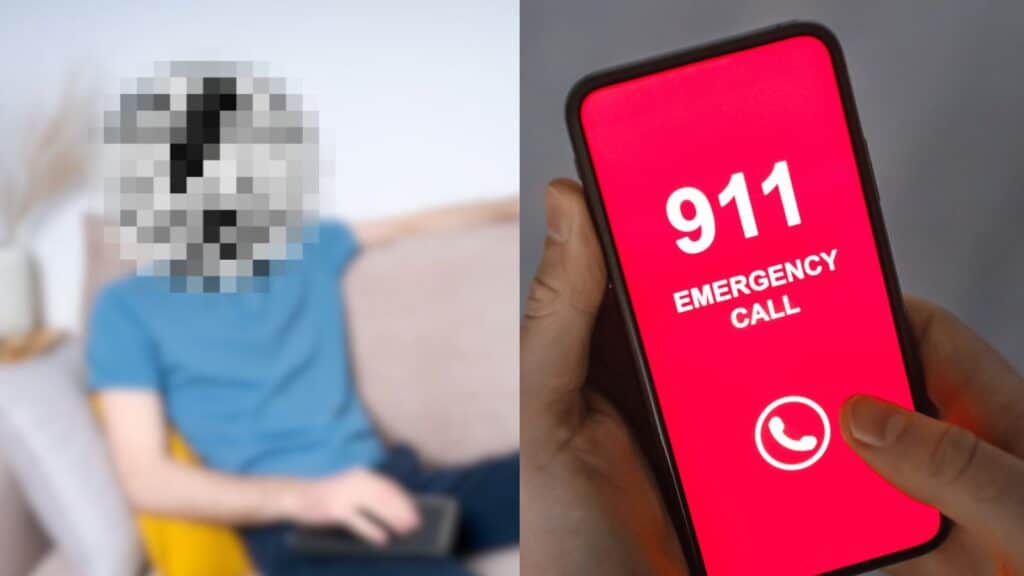Lately, pranksters online have been using AI to put a fake image of a stranger in a home photo. They then send that image to a parent or partner as a “warning.” As you might expect, the result is that people believe someone broke in and call 911. It’s a serious problem that’s happening in quite a few U.S. jurisdictions.
What the prank actually looks like
The prank itself is quite simple. Someone uses an AI app to drop a stranger into a living room or hallway shot, and then they text it to someone close, with a message like, “He’s inside.” The recipient sees what looks like a real person in their own home. They panic, and they call 911.
Multiple news stories and police comments have shared matching versions of this “prank,” with authorities in Salem, Massachusetts, and Round Rock, Texas, even identifying specific calls connected to this stunt. As a result, they’ve started warning the public after getting emergency calls tied to these fake images. News outlets report similar cases in parts of New York, too.
How does the image look real enough to fool people
AI image tech has gotten really, really good. Studies show people often can’t tell a well-made synthetic face from a real one. It’s this inability to identify fake images that is causing issues, as one still photo is sometimes enough to flip someone’s sense of reality for a moment.
Some teens are using AI filters and editing tools built into social apps, including Snapchat’s blending tools. Others are putting images into ChatGPT and asking it to add images of a stranger. It’s quite straightforward. Simply edit the image and send it, then record the victim’s reaction.
What police have put on the record

In press statements, police have confirmed they’ve had to respond to these prank-inspired 911 calls. In Round Rock, Texas, they traced multiple calls back to the prank idea. This has led to departments across different states issuing bulletins urging people to be cautious, while also telling them to teach their children about the risks of false 911 calls.
When a dispatcher receives a serious 911 call like this, they immediately send officers to the scene. The officers usually have their weapons ready. As such, this kind of hoax may lead to injuries or worse, risking the lives of the officers, as well as neighbors and other bystanders.
These calls also pull crews away from genuine emergencies, so there are slower responses for people who actually need help. Dispatchers can’t just ignore a call that sounds real. That means that every fake report uses up the system’s time & energy.
What the law says about fake emergency calls
Faking a 911 emergency is a crime that can land someone in serious trouble. Under federal law (18 U.S.C. §1038), a false report that sends out first responders could mean up to 5 years in prison. It’s even worse when someone’s hurt because of it, as the penalty jumps to 20 years. In cases where a life is lost, it can go as far as life behind bars.
But that’s not all. Offenders can be ordered to pay for the entire cost of the response, including the fuel and officer overtime. Don’t forget about the charges themselves. In Texas, the state classifies fake emergency calls as a Class A misdemeanor. It can turn into a felony if it leads to an actual police or fire deployment. While states use different terms, they all agree on one thing. It’s against the law & it’s expensive.
How cases are investigated & how costs get repaid

Once a false report happens, detectives usually go after the digital trail by looking through phone logs and IP addresses. They may also use app records to trace where the call came from. The FBI’s Internet Crime Complaint Center has tracked these kinds of hoaxes for years, even with some people hiding behind VPNs or spoofed numbers.
The financial aspect of the case comes after a person is caught. Some states also include fines or probation. That means a few minutes of “fun” can turn into a years-long legal headache & a massive bill.
Related pranks
The idea of making false reports isn’t new. Swatting involves someone calling about a fake emergency to get tactical police to show up at someone’s house. Sadly, this has happened to regular people as well as celebrities. Those found guilty of swatting have received penalties for hoax threats and false alarms. In 2025, a Romanian national pleaded guilty in federal court for leading a U.S. swatting ring.
There’s a separate trick involving Siri, where someone tells another person to say “112” or “108” to their phone. As those are international emergency codes, some iPhones redirect that speech command into a 911 call. It works differently from the intruder image since there’s no editing. However, it ends with the same result, which is a fake call to emergency services.

